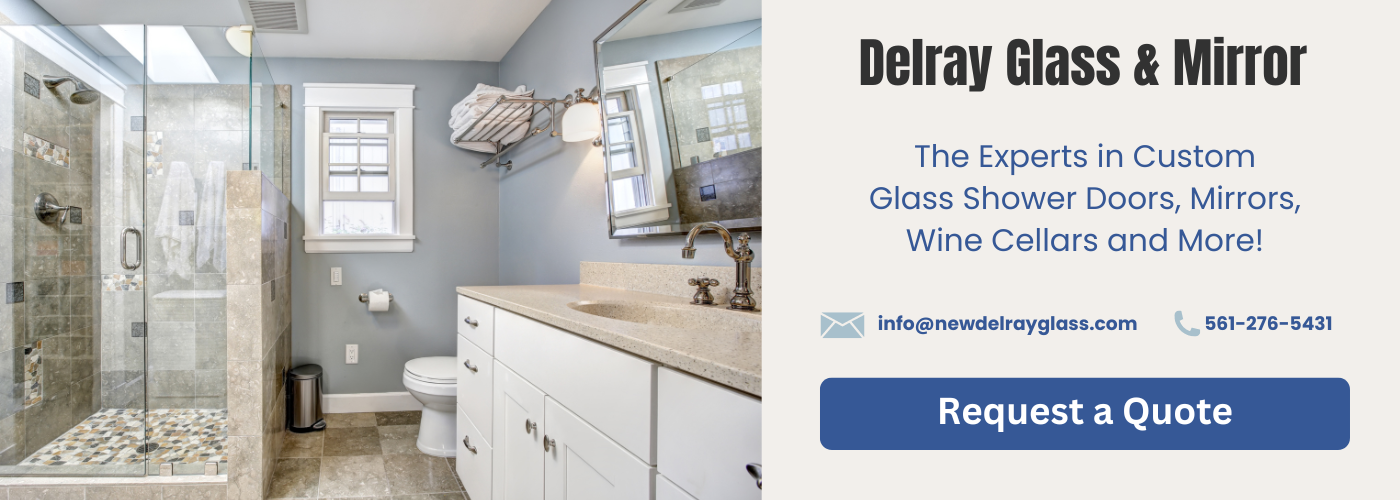**Does the Size of the Shower Door Affect the Type of Glass That Can Be Used?**
When designing a bathroom, the shower door is more than just a functional component—it’s a key design feature that can enhance the aesthetic and practicality of the space. However, choosing the right glass for your shower door involves more than just considering its appearance. The size of the door plays a crucial role in determining the type of glass that can be used, as factors such as safety, durability, and weight come into play. Whether you’re opting for a sleek frameless design or a more traditional framed door, understanding how size impacts glass selection is essential for making an informed decision.
In this article, we’ll explore the relationship between shower door size and glass type through five key subtopics. First, we’ll examine the **building codes and safety regulations** that dictate which types of glass are permissible for shower enclosures. Next, we’ll delve into the **strength and durability requirements** associated with larger shower doors and why size influences structural integrity. Moving forward, we’ll provide a **comparison of tempered and laminated glass**, the two most common options for shower doors, and discuss their suitability for different applications. We’ll also analyze the **weight and thickness considerations** for oversized doors and how these factors affect installation and support. Finally, we’ll look at the **customization and design options** available for various types of glass, ensuring you can balance functionality with style.
Whether you’re planning a bathroom remodel or simply upgrading your shower, understanding these factors can help you make the best choice for your space. Read on to discover how the size of your shower door intersects with the type of glass you can use, and how to strike the perfect balance between safety, performance, and design.


Building Codes and Safety Regulations for Shower Glass
Building codes and safety regulations play a crucial role in determining the type of glass that can be used for shower doors, regardless of their size. These codes are established to ensure that the glass used in residential and commercial bathrooms meets specific safety criteria, minimizing the risk of injury in case of breakage. In most regions, safety glass—such as tempered or laminated glass—is mandated by law for shower doors and enclosures. The choice between these types of glass may be influenced by the dimensions of the door, but the underlying requirement for safety always remains a priority.
Tempered glass is a popular choice due to its strength and unique breakage pattern. When tempered glass breaks, it shatters into small, blunt pieces, reducing the likelihood of severe injuries. Building codes often specify tempered glass for shower doors as a standard option because it is up to five times stronger than regular glass and can withstand significant impacts. However, for larger shower doors or custom designs, laminated glass may also be considered, depending on its compliance with local safety regulations.
Laminated glass, while not as common as tempered glass for shower doors, offers additional benefits such as soundproofing and enhanced durability. It consists of two layers of glass bonded together with a plastic interlayer, which holds the shards in place if the glass breaks. This feature can be particularly advantageous for oversized shower doors, where safety concerns are heightened due to the increased weight and surface area. Importantly, any choice of glass must align with local building codes, which may specify minimum thickness, allowable dimensions, and testing standards to ensure the safety of occupants.
In summary, building codes and safety regulations are the foundation for determining the suitability of glass types for shower doors, irrespective of size. While the size of the door may influence the choice of tempered or laminated glass, compliance with these codes ensures that safety remains the top priority. Homeowners and contractors must always consult local regulations and work with certified suppliers to ensure that their shower doors meet all necessary safety standards.
### Strength and Durability Requirements Based on Door Size
The size of a shower door plays a crucial role in determining the strength and durability requirements for the glass used. Larger shower doors naturally require glass that can withstand greater stress, as the increased surface area makes them more susceptible to bending, breaking, or shattering if the material isn’t sufficiently robust. The choice of tempered or laminated glass often depends on these strength and durability needs.
Tempered glass is a popular choice for shower doors due to its enhanced strength and safety features. It undergoes a heat-treatment process that makes it significantly stronger than regular glass and allows it to shatter into small, relatively harmless pieces when broken. This makes it an excellent option for larger shower doors, as it can handle the additional stress imposed by the door’s size and weight. However, the thickness of the tempered glass may need to be adjusted as the door size increases to ensure it meets safety standards and remains durable over time.
Laminated glass, on the other hand, consists of two layers of glass bonded together with an inner layer of polyvinyl butyral (PVB). This construction gives laminated glass added durability and prevents it from completely falling apart when broken, as the shards stick to the PVB layer. For extremely large or custom-designed shower doors, laminated glass may be preferred due to its enhanced structural integrity and ability to handle more substantial loads without compromising safety.
Ultimately, the size of the shower door will influence not only the type of glass chosen but also its thickness and reinforcement requirements to ensure it meets both safety regulations and practical usage demands. Consulting with a professional and adhering to local building codes can help determine the best option for your specific shower door size and design.
### Comparison of Tempered vs. Laminated Glass for Shower Doors
When it comes to selecting the type of glass for a shower door, understanding the differences between tempered and laminated glass is essential, especially in relation to the size of the door. Both types of glass are safety options, but they have distinct properties that make them suitable for different applications.
**Tempered glass** is one of the most common choices for shower doors due to its strength and safety features. It undergoes a heat-treatment process that makes it up to four times stronger than regular glass. In the event of breakage, tempered glass shatters into small, blunt pieces, reducing the risk of injury. For larger shower doors, tempered glass is often preferred because it is lightweight compared to laminated glass of the same thickness. This lighter weight minimizes stress on hinges and hardware, making it easier to install and operate.
On the other hand, **laminated glass** consists of two layers of glass bonded together with a plastic interlayer, usually made of polyvinyl butyral (PVB). This construction gives laminated glass a unique characteristic: if it breaks, the pieces remain adhered to the interlayer, preventing shards from scattering. While laminated glass offers superior soundproofing and security, it is heavier than tempered glass, which can pose challenges for larger shower doors. However, its ability to resist penetration and stay intact may make it a desirable option for those prioritizing safety and durability in high-traffic or family bathrooms.
The size of the shower door can influence which glass type is more practical. For smaller doors, either tempered or laminated glass can work well without significant concerns about weight or hardware compatibility. For larger doors, tempered glass is generally preferred due to its lighter weight and ease of handling, but laminated glass may still be chosen if additional safety features are desired. Ultimately, the decision between tempered and laminated glass should account for factors like door size, design preferences, and the specific needs of the bathroom environment.
Weight and Thickness Considerations for Larger Shower Doors
When it comes to larger shower doors, weight and thickness play a critical role in determining the type of glass that can be used. As the size of the shower door increases, so does its overall weight, which directly impacts the structural integrity and hardware required to support it. This is why manufacturers and designers must carefully evaluate the thickness and weight of the glass during the selection process.
Tempered glass, for instance, is often the preferred choice for larger shower doors due to its strength and safety features. It can be manufactured in thicker panels, which are better suited to handle the added weight of oversized doors. Typically, tempered glass for shower doors ranges from 3/8 inch to 1/2 inch in thickness, with thicker options providing enhanced durability and a more luxurious appearance. However, the added thickness also means increased weight, which requires sturdy hinges, handles, and support systems to ensure the door functions properly without sagging or stressing the frame.
Laminated glass, while offering excellent safety features such as shatter resistance, may not always be the best option for larger shower doors due to its heavier composition. Laminated glass consists of two glass layers with a plastic interlayer, which adds to its weight compared to a single pane of tempered glass of the same thickness. This additional weight can pose challenges in terms of installation and hardware requirements, especially for frameless shower door designs.
Ultimately, the size of the shower door significantly influences the choice of glass type, as well as its thickness and weight. Designers and homeowners must strike a balance between aesthetics, functionality, and safety while ensuring that the chosen glass can be adequately supported by the surrounding structure and hardware. Consulting with professionals and adhering to local building codes is essential to achieve a durable and visually appealing shower enclosure.
Customization and Design Options for Different Glass Types
When it comes to choosing the glass for a shower door, the size of the door does play a role in determining the customization and design options available. Larger or uniquely shaped shower doors often require more specialized glass types to meet safety and aesthetic requirements. Tempered glass, for example, is popular for its strength and ability to be customized into various shapes and sizes without compromising durability. Laminated glass, on the other hand, offers additional design possibilities, such as incorporating decorative interlayers or frosted finishes, which can enhance privacy and style.
Customization extends beyond just the type of glass. For larger shower doors, manufacturers may recommend specific edge finishes, patterns, or tints to complement the bathroom’s overall design while ensuring the glass meets structural integrity standards. Textured glass, etched designs, or decorative treatments like sandblasting can add a unique touch to the door, making it a centerpiece in the bathroom. However, the feasibility of these designs often depends on the size and thickness of the door, as well as the glass type used.
It’s also worth noting that the hardware used to support larger shower doors, such as hinges and handles, may influence the design options for the glass. Certain glass types, like thicker tempered glass, are better suited for frameless designs, offering a sleek and modern appearance. Conversely, laminated glass often works well with framed or semi-framed designs to provide additional support. Ultimately, the size of the shower door and the type of glass chosen go hand in hand, shaping both the practicality and the visual appeal of the final product.
